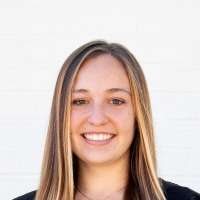Estimated read time: 5-6 minutes
- The Bryce Canyon Wildlife Conservation Museum in Utah showcases taxidermy to promote conservation.
- Photographer Ton Schless is creating a photo book to enhance awareness and education.
- Museum owner Robert Driedonks highlights conservation through unique taxidermy displays and educational efforts.
BRYCE CANYON — Right off of state Route 12, as you are nearing the turn to go to Bryce Canyon National Park, sits a small but mighty museum.
The Bryce Canyon Wildlife Conservation Museum is something of a hidden gem in Garfield County. Inside, more than a dozen massive dioramas depict nature scenes with the museum's large collection of taxidermy animals.
Photographer Ton Schless has lived in several different countries and visited museums all over the world, but he was "blown away" by the museum when he visited the small Utah town in 2016. He was struck by the quality of the taxidermy and the "beautiful" way the dioramas were put together.
"What I saw here was really a very educational setup where people see the animals in their natural habitats," he said.
The museum has 17 dioramas — a majority of which are animals from the western U.S. — but several of the exhibits showcase animals from all over North America, Africa, Asia, Europe, and Australia. The collection includes almost 1,000 animals, including a mountain lion acquired 53 years ago and a butterfly from 1901.
"We have every animal in the West in their individual dioramas. We have bighorn sheep, we have a roadrunner, desert tortoises, gila monsters," museum owner Robert Driedonks said.
Backed by murals painted by a biologist, the nature scenes include real grasses, plants and rocks to create as lifelike a scene as possible.
At any other museum, "you don't get to see what you see here," Schless said.
A museum and a photo book
Originally from Holland, Driedonks was fascinated by the amount of animals he saw when he moved to Canada as a boy. He moved to Las Vegas in 1961 and started collecting taxidermy animals.
"At 16, I got my first deer, and I took it to my taxidermist, and it was so superb in the mounting that it looked so real. So I decided to do a museum. I traveled the whole entire world, just about, and collected specimens," he said.
Driedonks opened his first museum in Panguitch, which operated for 10 years, then built and opened the Bryce Canyon Wildlife Conservation Museum 20 years ago. With additional plans in the works, Driedonks hopes to expand the museum.

For the last five years, Schless has been meticulously photographing everything in the collection (he didn't quite finish photographing all 1,600 butterflies, he jokingly admitted) to compile into a photo book of the museum. Along with his photographs, Schless has been researching the animals and writing passages about conservation efforts for the creatures.
"The book is really about awareness and conservation and education. All the writings in the book are mine and have been verified by wildlife specialists," Schless said.
Many of the animals in the collection were hunted as part of conservation efforts to preserve populations by balancing out overpopulated species.
"A lot of people think about hunting as bad. 'It's cruel.' 'It should not be done.' 'Nature should be nature.' But humanity has done enough to the world that nature is no longer nature, and you have to do those conservation efforts. And hunting is one of them," Schless said.
While most taxidermy of big prey animals depict them as aggressive with their teeth bared, Driedonks modifies and carves his own molds to put them in poses and arrangements that highlight natural awareness and conservation.

It is illegal to hunt baby animals, so most taxidermy collections do not have babies, but this museum has 25.
For specimens that are protected or not normally hunted, Driedonks has a permit that allows him to salvage the animals from road kill. The Utah Division of Wildlife Resources will also sometimes ask if he wants to use animals found on the side of the road.
On at least two different occasions, Driedonks has performed "C-sections" on dead animals that were pregnant and about to give birth, and he was able to get the babies for the collection.
A worldwide impact
Bryce Canyon National Park gets almost 3 million annual visitors from all over, and the museum aims to teach conservation to all, Schless said. The museum is a "beacon" for conservation, and he hopes to amplify that message with his photo book.
"We are encroaching on nature all the time. Cities are growing terribly, habitats are being destroyed," Schless said. "Everything is connected — nature is connected. Whatever decisions are being made for expansion or changing nature, you have to keep in mind that we are not alone in this world."
Schless is glad the museum has animals from not just Utah, so he didn't have to limit his work to only a small part of conservation, but he could make it broad and expansive.
"Anyone who visits the national parks here, they find those animals there. You want to cater to all these people that visit here from all over the world," he said.
The museum guest book is filled with "beautiful" comments left by people from all over who had never seen coyotes, porcupines or other various animals before. Driedonks said he loves reading through them and seeing how many people are being impacted.
"When you look at the museum here, it's a very exceptional museum. It's a museum to be proud of as Utah, as Garfield County because there are no museums like this," Schless said.
Schless's photo book will have two volumes of more than 300 pages each. The first volume is available online and will be sold at the museum soon.









